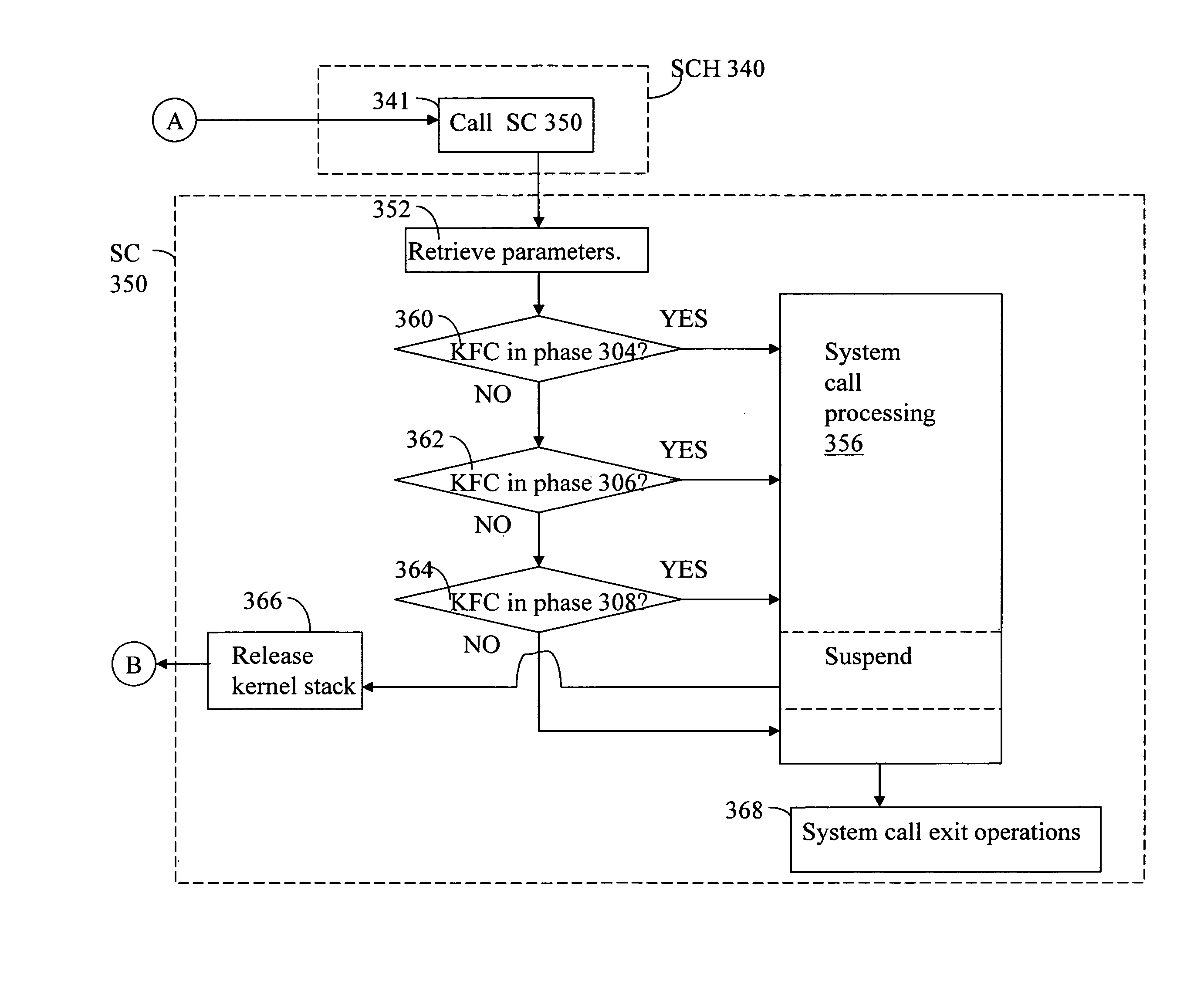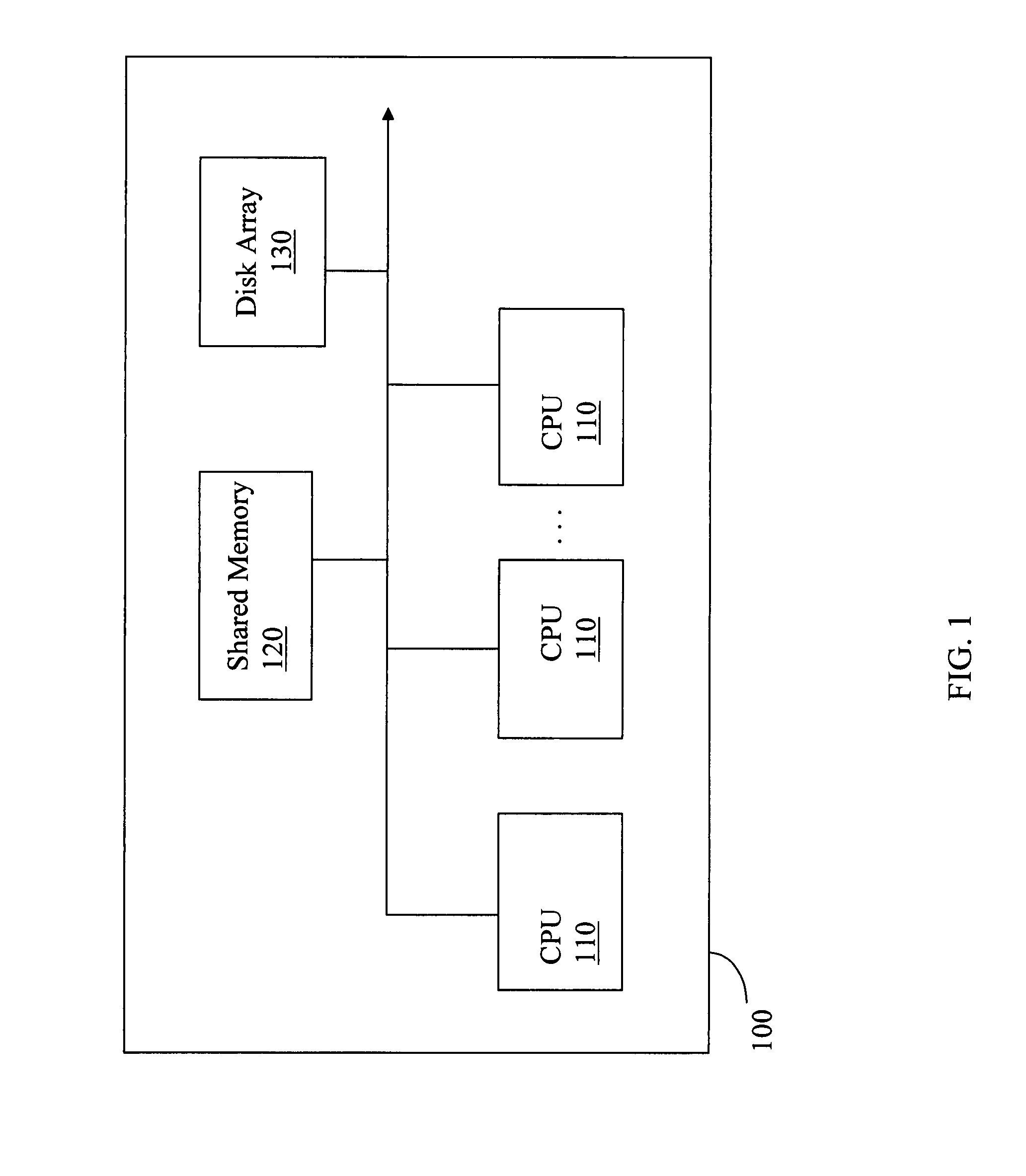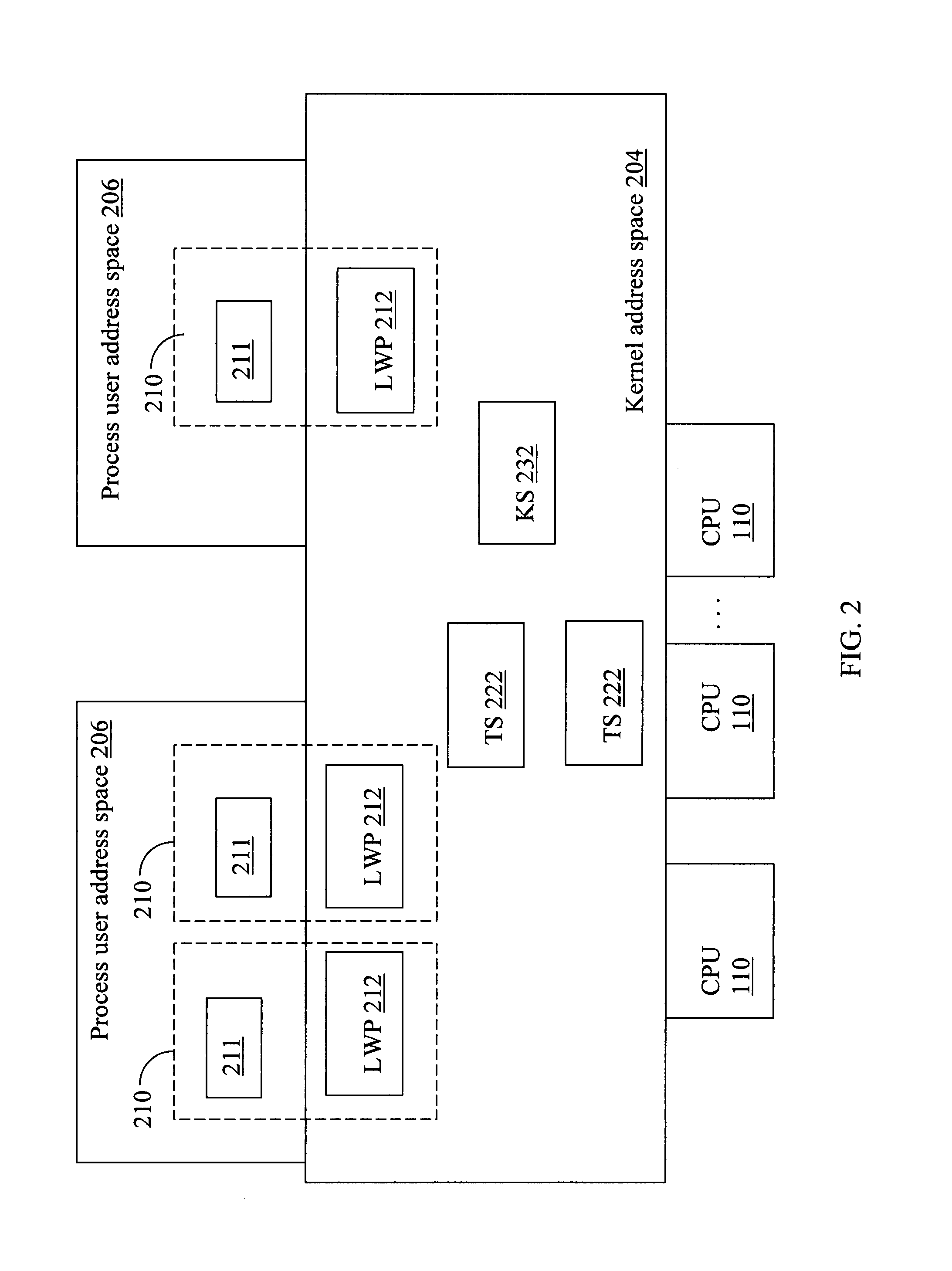Method for promotion and demotion between system calls and fast kernel calls
a technology of system call and kernel call, applied in the field of computer operating systems, can solve the problems of inconvenient use, inability to perform thread operations that cannot be performed in local user address space, and inability to avoid substantial use of global, so as to reduce system latency and increase system resources, the effect of reducing system latency
- Summary
- Abstract
- Description
- Claims
- Application Information
AI Technical Summary
Benefits of technology
Problems solved by technology
Method used
Image
Examples
Embodiment Construction
[0020]Referring to FIG. 1, a high level overview of a multiprocessing data processing system 100 is depicted. A plurality of CPUs 110 are connected via bus 101 to shared memory 120 and to a mass storage device represented by disk array 130. All CPUs 110 share access to shared memory 120. A variety of additional well-known data processing devices and peripherals, not shown, could also be connected to bus 101.
[0021]Referring to FIG. 2, when data processing system 100 is running, one or more user processes 206 will be resident in user address space. Each process 206 may utilize one or more threads 210 and multiple threads 210 may be active simultaneously in each process during process execution.
[0022]Each thread 210 that is active in process 206 will exist partially in process 206 address space and partially in kernel address space 204. Thread 210 contains user space portion 211 and kernel space portion 212. The kernel-resident portion of each thread is typically referred to in the art...
PUM
 Login to View More
Login to View More Abstract
Description
Claims
Application Information
 Login to View More
Login to View More - R&D
- Intellectual Property
- Life Sciences
- Materials
- Tech Scout
- Unparalleled Data Quality
- Higher Quality Content
- 60% Fewer Hallucinations
Browse by: Latest US Patents, China's latest patents, Technical Efficacy Thesaurus, Application Domain, Technology Topic, Popular Technical Reports.
© 2025 PatSnap. All rights reserved.Legal|Privacy policy|Modern Slavery Act Transparency Statement|Sitemap|About US| Contact US: help@patsnap.com



